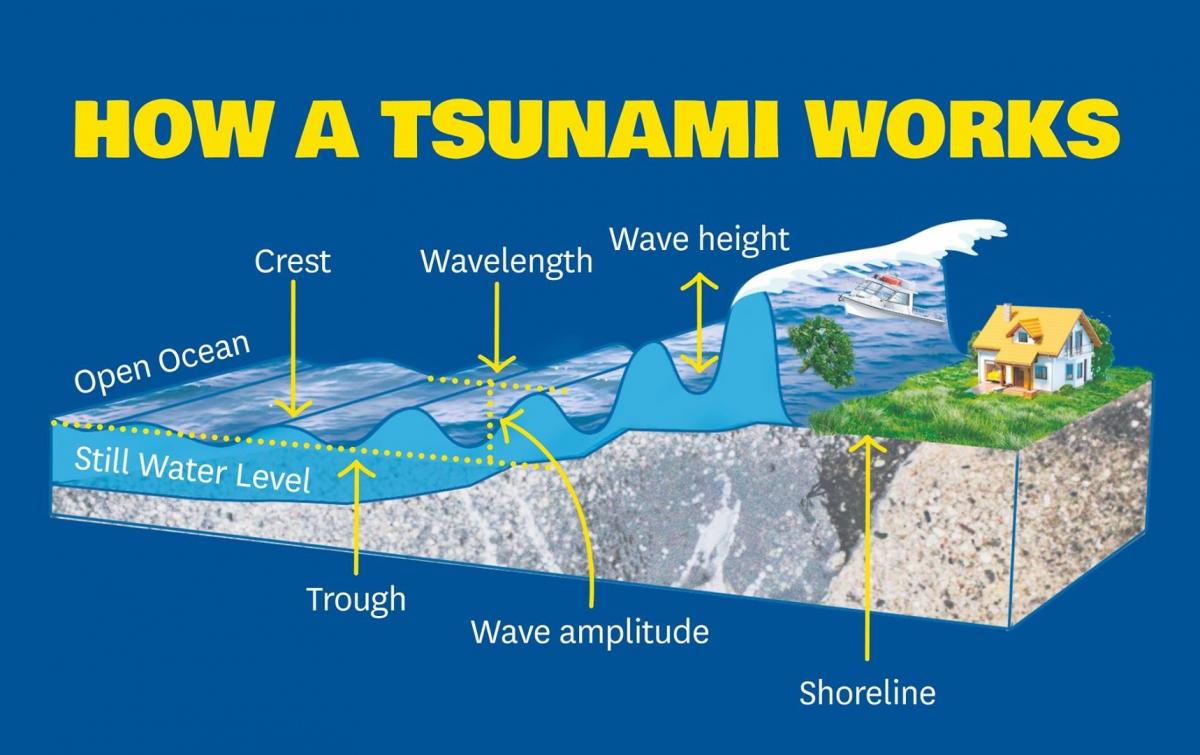WHAT IS TSUNAMI ?

What is Tsunami ?
- The word Tsunami literally means 'harbor wave'.
- They can be described as a series of waves.
- The characteristics feature that differentiates these waves are is their long wave length.
Tsunami are giant waves caused by earthquakes or volcanic eruptions under the sea. Out in the depths of the ocean, tsunami waves do not dramatically increase in height. But as the waves travel inland, they build up to higher and higher heights as the depth of eh ocean decreases. The speed of tsunami waves depends on ocean depth rather than the distance from the source of the wave. Tsunami waves may travel as fast as jet planes over deep waters, only slowing down when reaching shallow waters. While tsunamis are often referred to as tidal waves, this name is discouraged by oceanographers because tides have little to do with these giant waves.

How are Tsunamis Generated ?
- Earthquakes generate Tsunamis.
- It must be noted that they can be generated only through the vertical movement of the sea floor.
- Tsunamis can be generated by landslides and even a volcanic activity too.
How Often Do Tsunamis Occur ?
On an average, every 15 years a tsunami occurs in the Pacific Ocean.
How is a Tsunami Different from a Wind Generated Wave?
Tsunami's should not be confused with the huge wind generated wave. A wind generated wave lasts for some seconds whereas Tsunami remains for minutes to hours. Tsunami's can be disastrous which a wind generated wave is not.
Tsunami Vulnerability in South Asia :
INCOIS is the body that is vigilant regarding Tsunami's on the Indian coast.
The possible zones are Andaman - Sumatra or Makran (Pakistan).
Mitigation Measures :
- Effective Planning.
- Building of walls as done by Japan.
- Planting trees as done in Tamil Nadu by a village.
- Proper relief and rehabilitation preparedness.
- Awareness among the masses.